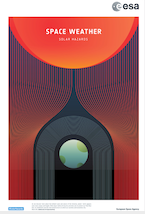Speaker
Description
The Distributed Space Weather Sensor System (D3S) is an excellent initiative and already consists of many sensors and instruments, including neutral and charged particle as well as radiation monitors and magnetometers. However, one type of key instrument is missing: no wave instruments/sensors are planned to be included.
Electromagnetic waves in the ULF-ELF-VLF band play a key role in wave-particle interaction, the major process generating and precipitating energetic particle in/from the radiation belts, the ‘engine’ of the radiation environment. A few examples: chorus waves are generated by thermal anisotropy of seed population in the outer radiation belts and these waves can accelerate the source population up to (ultra) relativistic energy; EMIC waves can precipitate the high energy particles into the atmospheric loss cone; hisses and VLF transmitter signal create and maintain the slot region, etc. The diffusion coefficients in the Fokker-Planck equation (that describes the dynamics of the radiation belts) need to be calculated from the measured wave amplitudes, their continuous measurement therefore is inevitable for any reliable SWE/SSA models/operation.
We have developed a concept of ‘full featured’ wave measurements in an ESA project (Contract No. 4000120693), the elements of the system, such as sensors, booms, data acquisition and processing unit: the Signal Analyzer and Sampler (SAS) instrument) have successfully flown recently on several satellites (COMPAS-2, Chibis-M, RELEK), was installed on ISS in Obstanovka experiment and are in development stage for Trabant microsatellite mission and Obstanovka Phase-2 experiment on ISS.
Based on these experiences, we propose to develop D3S-SAS instrument and include it into D3S pool.
In this talk we present the basic concept and specification of D3S-SAS with several option from the “full-featured” one to the simplest single component measurement offering opportunity for various host environment

